Wonder Woman of Greater Georgetown
By • November 9, 2016 0 1778
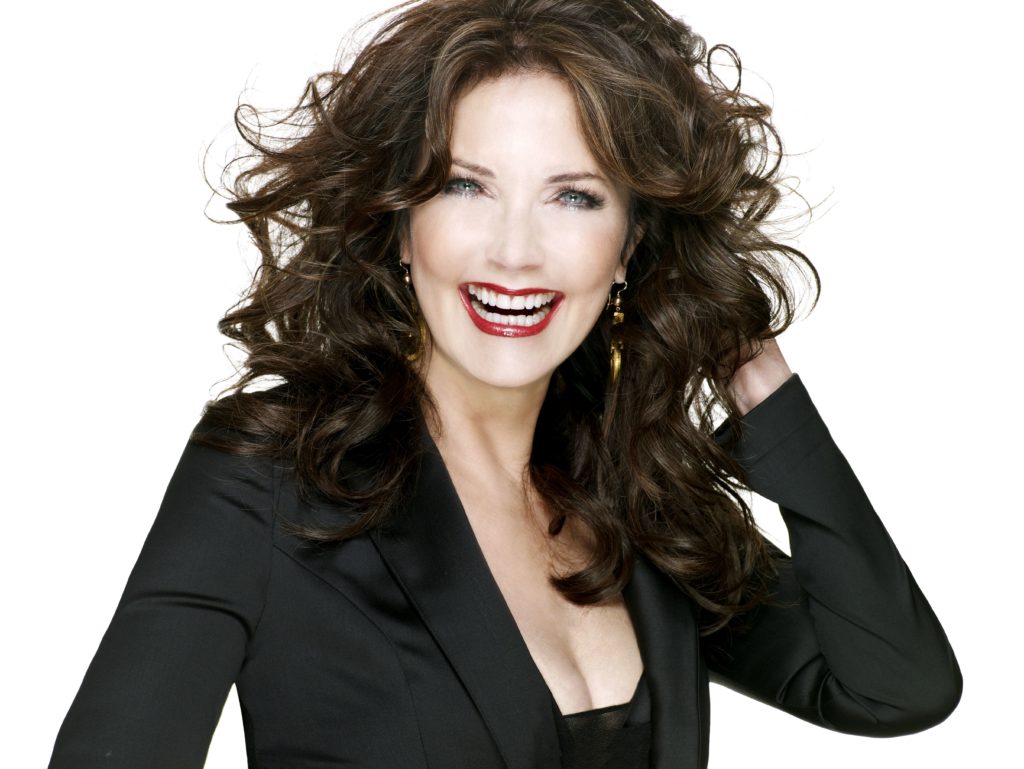
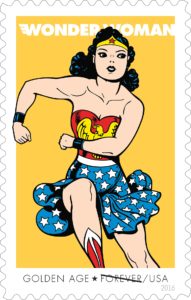
Art by H.G. Peter.
In the last row of
stamps, Wonder
Woman from the
Golden Age bursts
onto the scene as
originally envisioned
by creator William
For some time now, we’ve been noticing with awe the rising influence of inspirational, high-achieving women throughout the Washington area. They are making their mark not only in traditional women’s careers such as academia and nonprofits but also in business, journalism, entertainment, sports, law enforcement and, of course, national politics.
We’re going to be telling you about some of these “wonder women” in a series of articles.
We start with three today. But we have to begin our admiration tour with a question: Did women discover their voices and their power thanks to a cartoon character first published 75 years ago?
We decided to ask the original Wonder Woman herself — Miss World America of 1972, actress, jazz singer and Bethesda resident Lynda Carter, who starred in the ABC television series that aired from 1975 to 1979. “Wonder Woman was never supposed to be just
a male Superman in a beguiling swimsuit-like costume,” Carter said in a recent telephone
interview. “She represents an idea: that women can be strong and accomplish good things.
“Women know who we are,” she explained. “We organize and keep together families and
communities and societies. Women are often the wise ones in the family. Wonder Woman
defended Good. Her tools were strength, not destructive powers. She became We.”
Carter recounted receiving thousands of testimonials from women all over the world who
told her — some with tears streaming down their faces — how Wonder Woman had inspired
them to be strong, to face their challenges, to take action.
Last month, the United Nations appointed Carter and new Wonder Woman actress Gal
Gadot honorary UN ambassadors for the empowerment of women and girls. Carter said
she doesn’t know yet what that will entail, but hopes it will involve specific projects in a world
awakening to the importance of women’s education and security. In the meantime, she has just completed a new album with her longtime, velvety jazz allstar band. It includes performances with her son and daughter, who both studied law. When they were infants, Carter voluntarily retired from her rigorous on-the-road acting and musical careers to raise them.
“I’ve seen big-time actors and singers take their children on the road and decided it’s not a
healthy life for them, it’s not normal,” Carter said. Although she kept her hand in acting with some local gigs, commercials and such, her children didn’t really appreciate her professional talents until she appeared in “Chicago” in London when they were older teens. “You can really sing, Mom,” she laughingly recalled them saying. Like Wonder Woman, the now 65-yearold
Carter has plenty of future projects. She just opened the second season of “Supergirl,” playing a woman president. When asked if she would be performing in D.C. soon, she said nothing was scheduled. “Perhaps for the inauguration?” she was asked (since Hillary Clinton is a longtime friend). Carter laughed. “May be.”
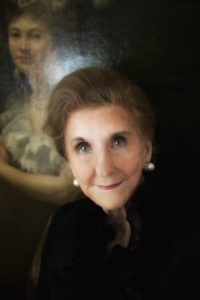
Wilhelmina Holladay, co-founder of the National
Museum of Women in the Arts, worked for the U.S.
Air Force and the Embassy of China. She is, of
course, an avid art collector with interests that range
from the classic to the ultramodern. Photo by Philip
Bermingham.
Wilhelmina Holladay: Champion of Women Artists
Wilhelmina Cole Holladay was 19 when the brand-new Wonder Woman comic series
was published 75 years ago. But she was already well on her way to being a 21st-century wonder woman. A 70-year resident of Georgetown, Holladay is the inspiration, founder,
builder and totally engaged dynamo behind the National Museum of Women in the Arts. It can be said that she and her husband of more than 60 years were the first in the world to seriously search out, buy and singularly collect the work of women artists. They would give
shows in their home on R Street. In 1987, their collection became the core of a now world-renowned collection of art by women housed in the palatially renovated 1908 Masonic Temple at the tip of New York Avenue, three blocks from the White House.
“Ever since I was a little girl growing up in Rochester, New York, my grandmother would tell me constantly ‘always recognize beauty.’ She drilled it into me — to look at everything, even a fading flower, and to recognize its beauty,” Holladay said, pouring tea from a silver teapot in the art-filled house her husband Wallace built after World War II. She had come to Washington to work for the Air Force as a liaison to the Chinese Embassy. She met her Wally
at a friend’s housewarming party; he helped her find an appropriate parking spot for the Packard automobile the embassy had loaned her.
“Wally had a wonderful eye for art,” she said, glowing at the memory of her husband, who passed away in 2012. “He was totally supportive of all my ideas, not only to collect and show the art of women artists, but also to buy and massively renovate the completely run down old Masonic Temple.” It took years and the help of thousands of people to
get the permits, do the restoration and enhance the décor, including securing
and installing massive amounts of marble in the main room and staircase. “Mayor Marion Barry was wonderful,” Holladay recalled. Barry would introduce her to everyone saying, “This
lady is going to help beautify our city.” “He never had one inspector come and it saved us millions,” she said. First ladies like Barbara and Laura Bush and Hillary Clinton were also very supportive. A picture of Holladay with Clinton at the White House adorns a living room
table, along with photos of her two children, four grandchildren and fouryear- old great grandchild. Her children are involved with the museum board and projects. “It was such fun giving out Halloween treats at my door last Monday with them,” she laughed. “They won’t let me retire,” she says of her children and her board. Her next project is to put together
a major show of one of her favorite artists, Louise Bourgeois. Holladay, who has many Bourgeois pieces in her home, insisted on showing this reporter her best. Ensconced under a custommade acrylic table in front of the cozy couch and armchairs of her bedroom’s sitting room is a sculpture of a huge — but somehow graceful and delicate — black spider. “Isn’t it wonderful!” sighed Holladay with pleasure, her clear blue eyes sparkling. The response has to be: as wonderful as Wonder Woman Wilhelmina herself.
Merribel Ayres: Strategic Advisor on Energy & Environmental Policy, Owner of Italian Fashion Boutique
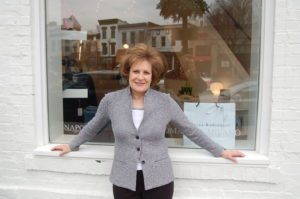
Merribel Ayres, founder of Lighthouse Consulting Group, owns the
Amina Rubinacci store near the Four Seasons Hotel. An involved philanthropist
as well as prominent expert on energy issues, she took up
cabaret for her 50th birthday. Photo by Robert Devaney.
“Oh, I just realized! Exactly 20 years ago today I founded my energy and environment
advisory firm, “Lighthouse Consulting Group, LLC,” mused Merribel Ayres. We were sipping coffee in front of her high-end Italian fashion boutique, Amina Rubinacci, on M Street in Georgetown, just steps from the Four Seasons Hotel. Ayres is the model of a successful wonder woman, a dual-career Georgetowner who cultivated her two passions and areas of expertise -energy & environmental policy and Italian fashion-into two well-run and viable enterprises. Her hands-on involvement with both businesses continues.
Her two-passion career began decades ago in Ireland, when-as a new liberal-arts graduate of Bryn Mawr College- she went to Dublin to earn an advanced degree in English at Trinity College. There, she became lifelong best friends with a woman from Florence, whose Italian
way of life became Ayres’s avocation – and eventually vocation, when it came to fashion.
“I noticed that professional women in Italy are dressed beautifully,” said Ayres. “The beauty gene is in their DNA and it is reflected in their presentation.”
Shopping in Italy, Ayres discovered the unique “family boutiques” which are “taking on the age of globalization.” The clothes and accessories are solely designed and fabricated in family businesses that often involve several generations. “These family brands are all about artistry and quality, rather than volume,” Ayres emphasized. “A few fine garments makes several outfits,” is their motto. Over time, Ayres found herselfwearing an entirely Italian wardrobe.
Ayres came to D.C. for a job on the Hill. She became a key staffer to the bipartisan National Commission on Air Quality (NCAQ), where she worked closely with the energy and environmental stakeholdersnationally.
The NCAQ mission was to evaluate the 1977 Amendments to the Clean Air Act and make recommendations to Congress.
For the next 15 years, Ayres had top jobs with organizations involved with energy issues. She had to hire several lobbying firms and noticed a big gap: most firms identified themselves by party affiliation rather than expertise. There was need for a nonpartisan, knowledge-based consulting company on energy and environmental policy.”
On Nov. 1, 1996, Ayres left her job heading a trade association and founded her bipartisan strategic communications and advocacy firm. Her clients have included dozens of corporations, non-governmental organizations, think tanks and trade associations. She
was also the chief political advisor for the US Climate Action Partnership which involved several prominent CEOs of major companies teamed up with leading environmental groups.
But at the same time as her company was growing, so was her passion for Italian clothes. One day, during an hour-long break from an international energy conference in Rome, she discovered a family fashion boutique:
Amina Rubinacci. “Their beautifully tailored clothes translated exactly my love of beauty and Italy in a professional environment. They were/are the perfect fit for a lifestyle of travel and work in Washington,” she said. Three years ago, “I decided to open my own Rubinacci shop here in Georgetown. I jumped in with both feet.”
“The boutique ambience is like shopping in Italy, where the décor and products reflect the elegance of Milan and where the friendly atmosphere makes you part of the family,” Ayres explained. “I’m at a time of my life when everything has to have meaning. My shop helps women amplify and reflect their inner radiance.”
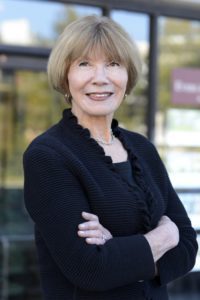
Donna Evers, owner of Evers & Co, the largest womanowned
and -run independent residential real estate company
in the Washington area, is also the owner of Twin
Oaks Tavern Winery, where she grows grapes and makes
wine, in Bluemont, Virginia. Photo Courtesy Evers & Co.
Donna Evers: Entrepreneur of Real Estate and Wine
For Donna Evers, a new chapter began in 1998, when her neighbor’s house, a once-charming hilltop inn with a glorious view of the Shenandoah Valley in Virginia’s Blue Ridge Mountains, burned almost to the ground. An electrical fire caused the upstairs bathroom to come crashing down into the large wooden kitchen of the bed and breakfast. “It was a total wreck,” said Evers, owner of Evers & Co., the Georgetown and Northern Virginia real
estate brokerage firm she founded in the 1990s. She verified the bleak assessment
with photos of the sodden, blackish mess. “But the views were exhilarating. My neighbor didn’t want to deal with it, so I bought it.”
Then what? Almost unbelievably, in a year Evers rebuilt and expanded the old house into a
modernized but historic and classy twostory home. But that was just the beginning. Evers had some three acres of land below the house plowed and cleared of massive limestone boulders, some of which now make up the new entranceway, large limestone steps and patio at the side of the house. Then she planted her vines: three acres of red and white
grapes, most from the famous vineyards of Northern California. She interspersed them with sweet smelling rosebushes “to distract the bees.” During the next three years, as she waited for the grapes to grow, Evers turned the entire ground floor and basement of the house into the Twin Oaks Winery, producing her own brand of merlots, cabernets sauvignons and chardonnays. She even has a not-so-secret winding staircase leading from a trap door in the family room to the winery basement — “so I can work at night.” Evers is a hands-on winemaker. In the fall, she, family and friends cut bundles of lush ripened grapes in the
vineyards below the house patio. They then load filled boxes of newly picked grapes into a large vat with a rotating blade wheel, which in minutes destems bushels of grapes and deposits them into the presser.
The grape pulp goes into organic gardening bins as gallons of juice flow into waiting oak, pine and stainlesssteel barrels. There, for weeks or even months, it ferments, settles, is raked and
ferments some more in Evers’s warmed fermentation room. Finally the new wine is poured into labeled bottles that are set aside, sometimes for a year or more, before they are sold and distributed by the case to an ever-increasing market identified by her winery staff, largely
family members. But that’s not all. The indefatigable Evers recreated the 1930s Twin Oaks
Tavern on the property above the house, with cozy wood paneling, a stone fireplace,
a polished bar and tables. From every angle, there are views of the valley and the rose-studded vineyards below. A separate building now serves as headquarters for her still-growing real estate business and staff. It is the largest woman-owned and -run real estate
company in the Washington area. “It’s all come together,” Evers said as she picked up her shears to go pick some more grapes. “Only thing I get a bit tired of is going up and down the
hill.”

